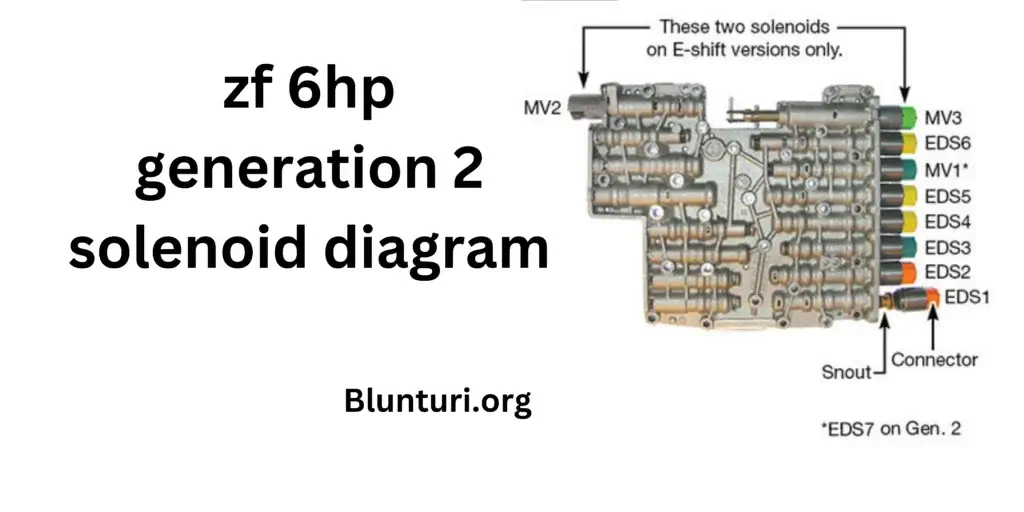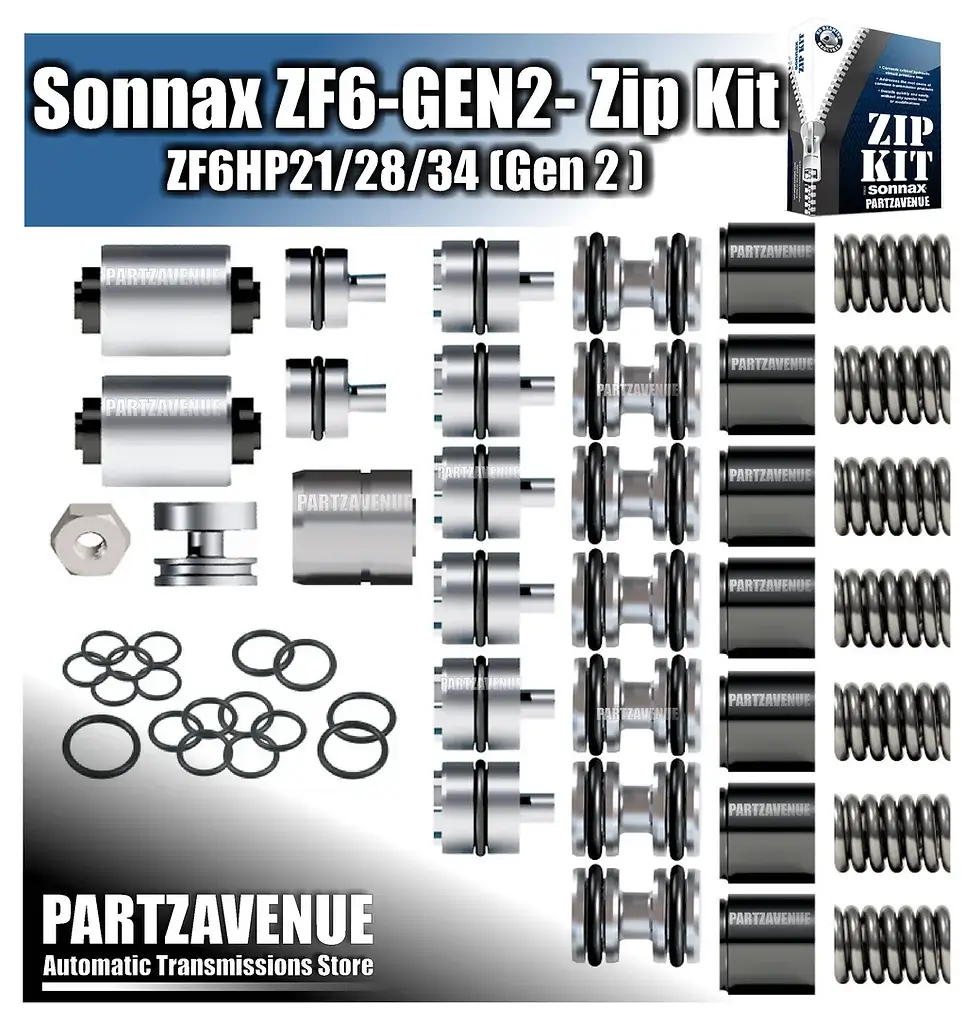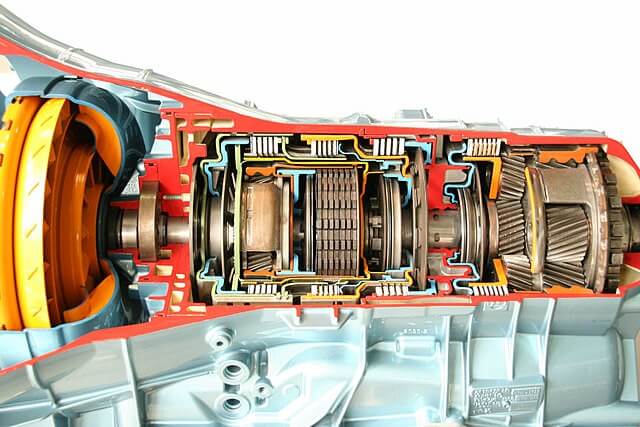 The ZF 6HP19 and ZF 6HP21 automatic transmissions are renowned for their performance and reliability. However, understanding their intricate solenoid diagrams can be challenging. This guide provides a detailed overview of the ZF 6HP19 and ZF 6HP21 Generation 2 solenoid diagrams, helping you to better comprehend their functionality and maintenance requirements.
The ZF 6HP19 and ZF 6HP21 automatic transmissions are renowned for their performance and reliability. However, understanding their intricate solenoid diagrams can be challenging. This guide provides a detailed overview of the ZF 6HP19 and ZF 6HP21 Generation 2 solenoid diagrams, helping you to better comprehend their functionality and maintenance requirements.
Introduction to ZF 6HP19 and ZF 6HP21 Transmissions
The ZF 6HP series, including the 6HP19 and 6HP21, are six-speed automatic transmissions produced by ZF Friedrichshafen AG. These transmissions are widely used in various vehicles due to their efficient performance, smooth shifting, and robust design.
Key Features of ZF 6HP19 and ZF 6HP21
- Six-speed automatic transmission
- Adaptive shift logic
- High torque capacity
- Efficient fuel consumption
Understanding Solenoids in Automatic Transmissions
Solenoids are crucial components in automatic transmissions. They control the flow of hydraulic fluid, which in turn engages or disengages the clutches and brakes within the transmission. Proper functioning of solenoids ensures smooth and accurate gear shifts.
Types of Solenoids in ZF 6HP19 and ZF 6HP21
- Pressure Control Solenoids
- Shift Solenoids
- Torque Converter Clutch (TCC) Solenoids
ZF 6HP19 Generation 2 Solenoid Diagram
The ZF 6HP19 Generation 2 solenoid diagram illustrates the layout and connections of various solenoids within the transmission. Understanding this diagram is essential for diagnosing issues and performing repairs.
Components of the ZF 6HP19 Solenoid Diagram
- Pressure Control Solenoid A
- Pressure Control Solenoid B
- Shift Solenoid 1
- Shift Solenoid 2
- Shift Solenoid 3
- TCC Solenoid
Diagram Analysis
- Pressure Control Solenoids (A and B): These solenoids regulate hydraulic pressure to ensure precise control over gear shifts and clutch engagement.
- Shift Solenoids (1, 2, and 3): These solenoids control the flow of hydraulic fluid to different clutch packs, enabling gear changes.
- TCC Solenoid: This solenoid controls the torque converter clutch, which improves fuel efficiency and reduces heat generation.
 ZF 6HP21 Generation 2 Solenoid Diagram
ZF 6HP21 Generation 2 Solenoid Diagram
The ZF 6HP21 Generation 2 solenoid diagram is similar to the 6HP19 but includes specific variations tailored to its design and functionality.
Components of the ZF 6HP21 Solenoid Diagram
- Pressure Control Solenoid A
- Pressure Control Solenoid B
- Shift Solenoid 1
- Shift Solenoid 2
- Shift Solenoid 3
- TCC Solenoid
Diagram Analysis
- Pressure Control Solenoids (A and B): Function similarly to those in the 6HP19, maintaining optimal hydraulic pressure.
- Shift Solenoids (1, 2, and 3): Responsible for directing hydraulic fluid to the appropriate clutch packs for gear selection.
- TCC Solenoid: Manages the torque converter clutch to enhance transmission efficiency and performance.
Common Issues and Troubleshooting
Understanding the solenoid diagrams for the ZF 6HP19 and ZF 6HP21 is crucial for troubleshooting common transmission issues.
Common Solenoid Issues
- Solenoid Failure: Solenoids can wear out over time, leading to erratic shifting or failure to engage gears.
- Hydraulic Fluid Contamination: Contaminated fluid can cause solenoids to stick or malfunction, affecting transmission performance.
- Electrical Problems: Faulty wiring or connectors can disrupt solenoid operation, leading to transmission issues.
Troubleshooting Tips
- Diagnostic Scanning: Use a diagnostic scanner to retrieve error codes related to solenoid performance.
- Visual Inspection: Check solenoids and wiring for signs of damage or wear.
- Fluid Maintenance: Regularly replace transmission fluid to prevent contamination and ensure proper solenoid function.
Maintenance and Best Practices
Proper maintenance of the ZF 6HP19 and ZF 6HP21 transmissions can extend their lifespan and ensure reliable performance.
Regular Fluid Changes
- Interval: Change transmission fluid every 60,000 to 80,000 miles, depending on driving conditions.
- Quality: Use manufacturer-recommended transmission fluid to maintain optimal performance.
Periodic Inspections
- Solenoid Inspection: Regularly inspect solenoids for signs of wear or damage.
- Electrical Connections: Ensure all wiring and connectors are secure and free from corrosion.
Professional Servicing
- Qualified Technicians: Have your transmission serviced by qualified technicians familiar with ZF transmissions.
- Diagnostic Tools: Use advanced diagnostic tools to accurately diagnose and address transmission issues.
Conclusion
The ZF 6HP19 and ZF 6HP21 transmissions are advanced and reliable components in many modern vehicles. Understanding their solenoid diagrams is essential for diagnosing and addressing transmission issues effectively. By following proper maintenance practices and troubleshooting tips, you can ensure the longevity and performance of your ZF transmission.


